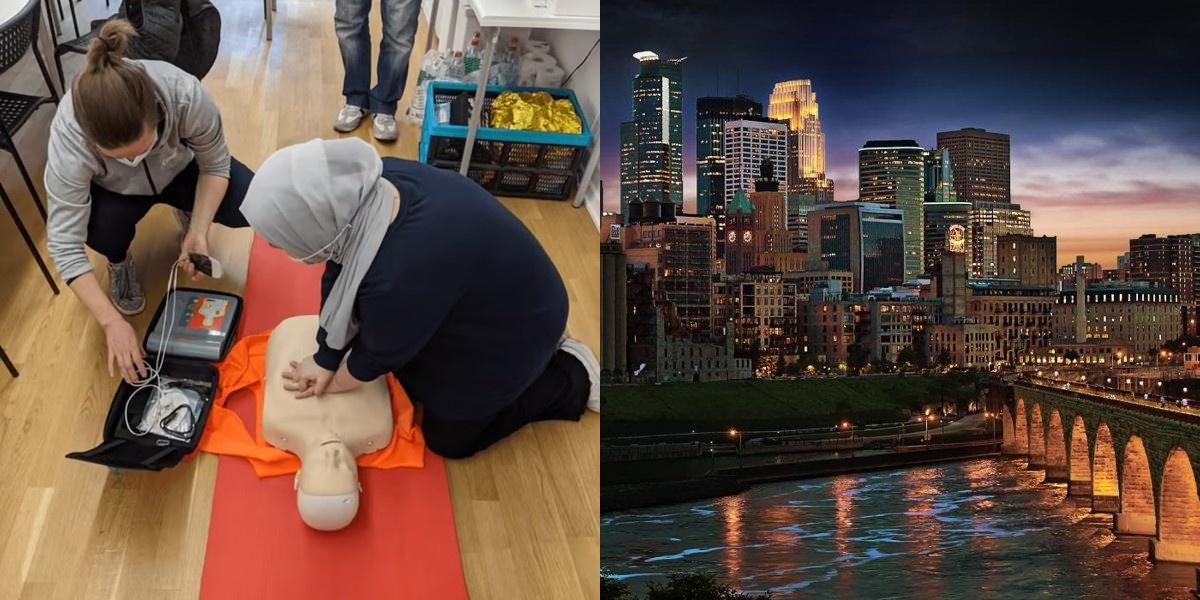What is a Paramedic?
A paramedic is a highly skilled and trained medical professional who provides emergency medical care to individuals in critical condition. They are often the first responders in emergency situations, providing immediate medical attention and transportation to the nearest medical facility. Paramedics are trained to assess a patient's condition, administer medication, perform advanced medical procedures, and communicate with healthcare professionals.
Where does a Paramedic work?
Paramedics can work in a variety of settings, including ambulance services, hospitals, fire departments, and private medical transportation companies. They are often found in high-pressure environments, dealing with life-threatening situations and providing on-the-spot medical care.
How to Become a Paramedic in Minnesota?
To become a paramedic in Minnesota, first complete an accredited two-year paramedic education program, then pass the National Registry of Emergency Medical Technicians (NREMT) exam to obtain certification, and finally search for local paramedic job opportunities.
What are the requirements to become a Paramedic in Minnesota?
To become a paramedic in Minnesota, individuals must meet certain education and legal requirements. These include:
-
Education: Aspiring paramedics must complete a state-approved paramedic training program. These programs are typically offered by community colleges, technical schools, and universities. The program usually takes around 1-2 years to complete and includes classroom instruction, clinical experience, and hands-on training.
-
Legal Requirements: After completing the paramedic training program, individuals must pass the National Registry of Emergency Medical Technicians (NREMT) paramedic certification exam. Once certified, they must also apply for state licensure through the Minnesota Emergency Medical Services Regulatory Board (EMSRB). This involves submitting an application, providing proof of certification, and paying the required fees.
Exploring a Career in Paramedic Outside Minnesota
If you've been reading this article and long to become a Paramedic, but you live in a different state, don't lose hope – achieving your goal is still within reach. You might consider exploring opportunities to become a Paramedic in Arkansas, Maine, New Hampshire, Pennsylvania, or Wisconsin. If none of these locations work for you, Dreambound makes it easier than ever to pursue your dreams regardless of your location by simplifying the process of finding and comparing CPR-BLS classes through a convenient search by zip code. With determination and access to the right resources, you can confidently pursue a successful career in healthcare, no matter where you live.
How do I get my Paramedic certification?
If you are interested in pursuing a career as a paramedic, the first step is to obtain your paramedic certification. Here's what you have to do:
1. Meet the prerequisites: Ensure you are at least 18 years old, have a high school diploma or GED, and hold a valid driver's license. Some programs may also require prior experience as an emergency medical technician (EMT).
2. Enroll in an accredited program: Find and enroll in a paramedic training program approved by the National Registry of Emergency Medical Technicians (NREMT). These programs typically take 6 months to 2 years to complete, depending on your prior education and training.
3. Complete the training: Successfully finish the coursework and hands-on training required by your paramedic program. This will include both classroom learning and practical, on-the-job experience.
4. Pass the NREMT exam: After completing your training, you must pass the NREMT paramedic certification exam. This exam tests your knowledge and skills through both written and practical components.
5. Apply for state certification: Once you've passed the NREMT exam, apply for paramedic certification in the state where you plan to work. This may involve submitting an application, paying a fee, and providing documentation of your education and certification.
How do I get a job as a Paramedic?
Once you have obtained your paramedic certification, the next step is to find a job as a paramedic. There are several ways to go about finding employment as a paramedic, including:
1. Apply directly to ambulance services: Ambulance services are often the primary employers of paramedics. You can research local ambulance services in your area and apply directly to them. Many ambulance services have online applications, so be sure to check their websites for job postings and application instructions.
2. Check job boards and websites: There are many job boards and websites that specifically cater to healthcare professionals, including paramedics. These websites allow you to search for paramedic jobs in your area and apply online.
3. Network with other paramedics: Networking is a valuable tool in any job search. Reach out to other paramedics in your area and ask if they know of any job openings or can provide any leads. You can also join professional organizations, such as the National Association of Emergency Medical Technicians (NAEMT), which can provide networking opportunities and job resources.
4. Attend job fairs and career events: Many cities and organizations host job fairs and career events specifically for healthcare professionals. These events can be a great way to meet potential employers and learn about job opportunities. Check local event listings and websites for information on upcoming job fairs and career events in your area.
When applying for paramedic jobs, it is important to have a well-written resume and cover letter. Highlight your paramedic certification, any relevant experience or training, and your skills and qualifications as a paramedic. Be sure to tailor your resume and cover letter to each job you apply for, emphasizing how your skills and experience align with the specific requirements of the position.
Career Paths and Opportunities after Becoming a Paramedic
Once you have become a certified paramedic, there are a variety of career paths and opportunities available to you. Some paramedics choose to work in traditional ambulance services, while others may pursue specialized roles or advance their education. Here are a few career paths you may consider after becoming a paramedic:
-
Emergency Medical Services (EMS) Supervisor: As you gain experience as a paramedic, you may have the opportunity to move into a supervisory role. EMS supervisors oversee the day-to-day operations of ambulance services and ensure that high-quality care is being provided to patients. This role may involve managing staff, developing protocols, and coordinating with other healthcare providers.
-
Flight Paramedic: Flight paramedics are paramedics who provide emergency medical care in a helicopter or airplane. These paramedics are often responsible for responding to critical situations and transporting patients to hospitals or trauma centers. Becoming a flight paramedic typically requires additional training and certification, as well as experience as a paramedic.
-
Specialized Paramedic Roles: There are a variety of specialized paramedic roles that you may choose to pursue. These roles may include working as a tactical paramedic with law enforcement or special operations teams, or as a critical care paramedic in a hospital setting. Specialized roles often require additional training and certification beyond the paramedic level.
-
Paramedic Educator: If you enjoy teaching and mentoring others, you may consider a career as a paramedic educator. Paramedic educators are responsible for training and instructing future paramedics. This role may involve developing a curriculum, teaching classes, and overseeing clinical rotations. Becoming a paramedic educator typically requires advanced education and experience as a paramedic.
-
Advanced Degrees in Healthcare: Some paramedics may choose to pursue advanced degrees in healthcare, such as a bachelor's or master's degree in nursing or emergency medical services. These advanced degrees can open up opportunities for leadership roles, research positions, or teaching positions in the healthcare field.





